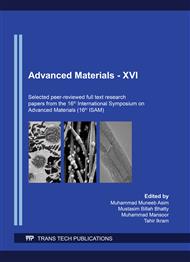p.88
p.96
p.107
p.116
p.121
p.127
p.138
p.146
p.153
Graphene Effect on Mechanical Properties of Sandwich Panel for Aerospace Structures
Abstract:
This research examines the mechanical properties of graphene-based polymer composites and Nomex honeycomb sandwich using a new strain sensing technique. Sandwich panels are fabricated individually with glass fibre reinforced polymers (GFRP) and face-sheets having different filler ratios of graphene nanoparticles (GNPs). These graphene nanoparticles are oxidized with (UV-O3) ozone to get graphene oxide (GO) which in turn improves resin matrix interfacial strength. Filler ratios of GO 0.0%, 0.2%, 0.6% and 1.0% by weight of poly-epoxy are fabricated for the face-sheets of composite sandwich panels. Graphene-based strain sensors are synthesized having a concentration of GNPs 5% by weight of polystyrene (PS). The strain sensors are pasted on the sandwich panels and four-point bending of the sandwich beams is performed to predict its flexural strength. The response of composite under different filler ratios of graphene oxide on mechanical properties is inspected during mechanical testing of sandwich panels and the results of (PS-GNPs) strain sensors will be compared with the strains produced during mechanical testing.
Info:
Periodical:
Pages:
121-126
Citation:
Online since:
February 2021
Authors:
Price:
Сopyright:
© 2021 Trans Tech Publications Ltd. All Rights Reserved
Share:
Citation:


